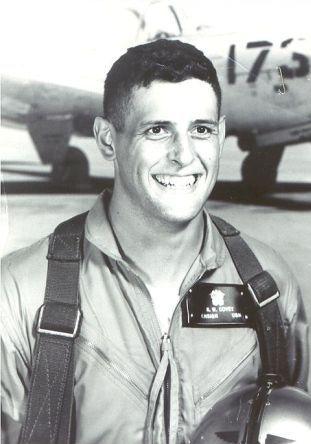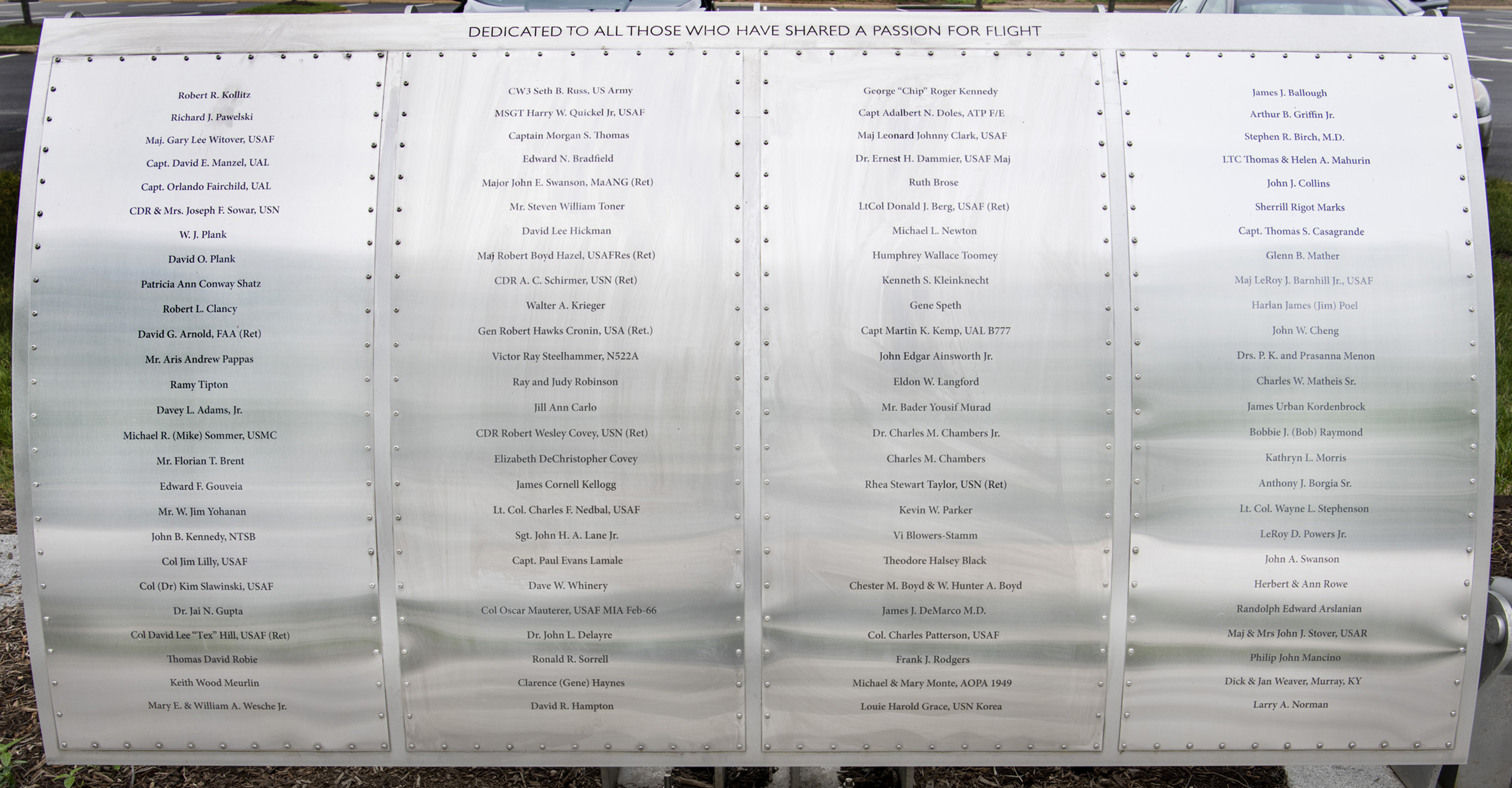CDR Robert Wesley Covey USN (Ret)

Foil: 38 Panel: 2 Column: 1 Line: 15
Wall of Honor Level: Air and Space Leader
Honored by:
Member of Distinguished Flying Cross Society. On 24 August 1972, Lieutenant Commander Robert Covey USN, pilot and Lieutenant junior grade Paul Morin USNR, bombardier-navigator (B/N), launched at approximately 0145 local from the USS America (CVA-66) in the Gulf of Tonkin for an armed reconnaissance mission in North Vietnam. It was a dark, moonless night with a broken to overcast layer in the middle altitudes. The flight was supported by A-7 Corsair IIs (IRON HAND), an EA6B Prowler (Electronic Jamming), and F-4 Phantom IIs (MIG CAP) flying over the Gulf.
They were flying an A6A Intruder, Bureau Number 157027, assigned to the Black Panthers of Attack Squadron THIRTY FIVE, call sign Raygun 504. The ship was armed with four Mark 20 ROCKEYE, and eight Mark 82 bombs with SNAKEYE fins and Variable Time fusing. The ROCKEYE was a canister weapon containing 196 2.2 pound bomblets. The canister spun on launch, then separated and dispersed the bomblets. The bomblets were dual fused with a conical shaped charge capable of penetrating 8 inches of Class A armor. The bomblet was remarkably capable of creating secondary explosions if such a target was encountered. The Mark 82 was a 500 pound general purpose bomb. The SNAKEYE fins allowed a low-altitude level delivery by retarding the bomb after release allowing the aircraft to fly clear. The Variable Time fusing caused the bomb to detonate 23 feet off the ground creating a spray of shrapnel.
The Intruder cruised north at approximately 20,000 feet until they approached the north coast of Vietnam, descending to cross the coast to the east of Haiphong and west of Campha with the Identification Friend or Foe (IFF) in Standby. The flight took them to an east-west valley north of Haiphong which contained a major route for trucks from China to Hanoi. The valley was protected on the south by a series of 2,500 foot hills and on the north by 3,500 foot mountains. Haiphong, the port city for Hanoi, was well protected with Surface to Air Missiles (SAMs) and anti-aircraft artillery (AAA). The Intruder, flying at 300 feet above the valley floor at 420 knots, could not be engaged by the Haiphong defenses. Flight was made possible by the skill of the B/N who could use the radar shadows to coach the pilot while the pilot was both flying instruments and looking for targets.
The Intruder exited the valley west of Haiphong and turned south to follow route 50, a highway from Haiphong to Hanoi. Now they were subjected to almost continuous AAA fire. Here they discovered a number of truck convoys traveling west. Using one ROCKEYE per convoy, they conducted five low-level attacks, observing secondary explosions in the cockpit mirrors. As they approached Hanoi, the Radar Homing and Warning (RHAW) began to sound like a rattlesnake, with a strobe at 1 o'clock and the SAM warning lights began to flash as a SA-2 site in the vicinity of Hanoi prepared to engage. The Intruder crew observed the launch of a GUIDELINE missile and the SAM warning lights went steady and the warning tones indicated that a SAM was in the air. Twenty seconds later, a second SAM was launched.
The INTRUDER turned to the left to place the SAM at 2 o'clock while climbing and descending slightly to verify that the SAM was tracking. At night, the only thing you see is the plume from the rocket engine. While we waited, our DECM was working and the pilot deployed radar defeating chaff. When the SAM approached, the pilot executed a hard climbing turn into the missile allowing it to pass below the aircraft. Unfortunately, we ended up at 2,500 feet as the second missile flew toward us. The pilot rolled, the Intruder inverted and pulled the nose down to dive toward the safety of the ground. As the SAM approached, the hard turn-climb maneuver was repeated. This time we only climbed a few hundred feet. The SAM passed below the aircraft and exploded. We could hear the sound of that explosion in the cockpit; at the same time we lost our computer and radar.
At this time we saw another truck convey, switched over to bombs for another attack. As the bombs exploded, the SAM site launched another salvo of two missiles. The pilot climbed to verify that the SAM was tracking, and then descended to 90 feet with the thought that the SAM would over control and hit the ground. It did not and both SAMs were defeated by similar hard breaks up an over the missile.
It was time to go home. With no system, we could not find the entrance to the valley and decided to exit south of Haiphong. We called our early warning aircraft; call sign HOME OFFICE, to see if they could guide us to the sea. However, they wanted us to turn on the IFF, so we were on our own. As we flew east, we began to get SAM warnings from an electronic support aircraft over the Gulf of Tonkin, call sign DEEP SEA. At each call we turned further south before resuming our flight east. We found another convoy of trucks and delivered the last of our bombs.
Finally we could see the waves breaking on the shore and could begin a climb to altitude. We asked for an inspection for combat damage from one of the air wing fighters on our way back to the aircraft carrier. We were undamaged.
DISTINGUISHED FLYING CROSS CITATION
"For heroism while participating in aerial flight as a pilot of jet aircraft attached to Attack Squadron THIRYT-FIVE embarked in USS AMERICA (CVA-66). On 24 August 1972, Lieutenant Commander COVEY launched on a night armed reconnaissance mission against heavily defended supply routes in North Vietnam. Despite heavy anti-aircraft fire and four surface-to-air missile firings at his aircraft, he pressed forth on multiple low-level attacks against enemy truck convoys. His superb bombing accuracy and airmanship resulted in the destruction of at least five enemy trucks. Lieutenant Commander COVEY's superior airmanship, aggressiveness, and extraordinary courage in the face of determined enemy opposition reflected great credit upon himself and were in keeping with the highest traditions of the United States Naval Service.
Wall of Honor profiles are provided by the honoree or the donor who added their name to the Wall of Honor. The Museum cannot validate all facts contained in the profiles.
Foil: 38
All foil images coming soon.View other foils on our Wall of Honor Flickr Gallery
